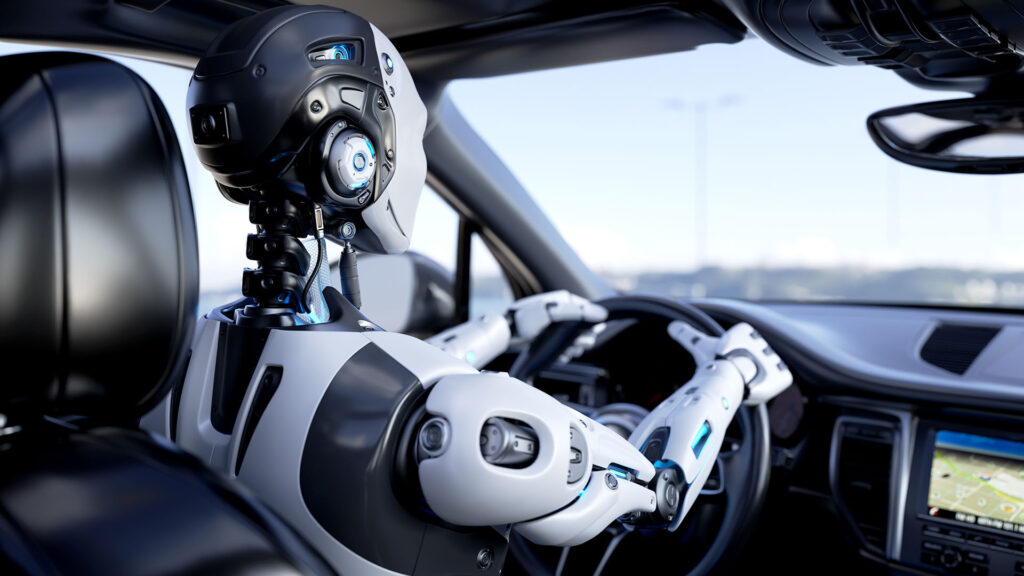Driving Towards the Future: The Rise of Autonomous Vehicles


In the rapidly evolving landscape of transportation, autonomous vehicles stand at the forefront of innovation, promising to revolutionize the way we move from point A to point B. With projections indicating that self-driving cars could become the norm by 2030, the era of autonomous vehicles is upon us, heralding a new era of safer, more efficient, and sustainable mobility. Let’s explore the transformative potential of autonomous vehicles and the impact they could have on the future of transportation.
The Promise of Autonomous Vehicles
Autonomous vehicles, also known as self-driving cars, rely on a combination of sensors, cameras, radar, and artificial intelligence to navigate the road without human intervention. By leveraging advanced algorithms and real-time data processing capabilities, these vehicles can perceive their surroundings, make decisions, and respond to changing traffic conditions with precision and accuracy. The promise of autonomous vehicles lies in their potential to significantly reduce traffic accidents, alleviate congestion, and enhance overall transportation efficiency.
Safety First: Reducing Traffic Accidents
One of the most compelling arguments for autonomous vehicles is their potential to enhance road safety. Human error is a leading cause of traffic accidents, accounting for the majority of crashes worldwide. Autonomous vehicles, with their ability to constantly monitor their surroundings and react instantaneously to potential hazards, have the potential to mitigate the risks associated with human error. By eliminating factors such as distracted driving, fatigue, and impaired judgment, self-driving cars could dramatically reduce the number of accidents on our roads, saving countless lives in the process.
Transforming Transportation: Efficiency and Accessibility
In addition to improving safety, autonomous vehicles have the potential to transform transportation as we know it. With the ability to communicate and coordinate with each other in real-time, self-driving cars can optimize traffic flow, reduce congestion, and minimize travel times. This not only leads to a more efficient transportation system but also enhances accessibility for individuals who may be unable to drive due to age, disability, or other factors. Autonomous vehicles offer the promise of greater mobility and independence for all, regardless of physical limitations or geographical location.
Challenges and Considerations
Despite their immense potential, autonomous vehicles also present a host of challenges and considerations that must be addressed. Technical hurdles such as perfecting sensor technology, refining algorithms, and ensuring cybersecurity are just some of the complexities associated with developing self-driving cars. Moreover, ethical dilemmas surrounding decision-making in critical situations, liability issues in the event of accidents, and regulatory frameworks for autonomous vehicles pose significant challenges that require careful consideration and collaboration among stakeholders.
Looking Towards the Future
As we look towards the future, the widespread adoption of autonomous vehicles holds the promise of a safer, more efficient, and sustainable transportation system. By harnessing the power of technology, innovation, and collaboration, we can unlock the full potential of self-driving cars and usher in a new era of mobility for generations to come. From reducing traffic accidents to transforming the way we commute, autonomous vehicles offer a glimpse into a future where transportation is safer, smarter, and more accessible for all. The future is autonomous, and the journey has only just begun. #AutonomousVehicles #FutureTech
In conclusion, the rise of autonomous vehicles represents a paradigm shift in the way we think about transportation. With the potential to enhance safety, efficiency, and accessibility, self-driving cars hold the key to unlocking a future where mobility is smarter, safer, and more sustainable. As we continue to innovate and overcome the challenges associated with autonomous vehicles, the future of transportation looks brighter than ever before.



